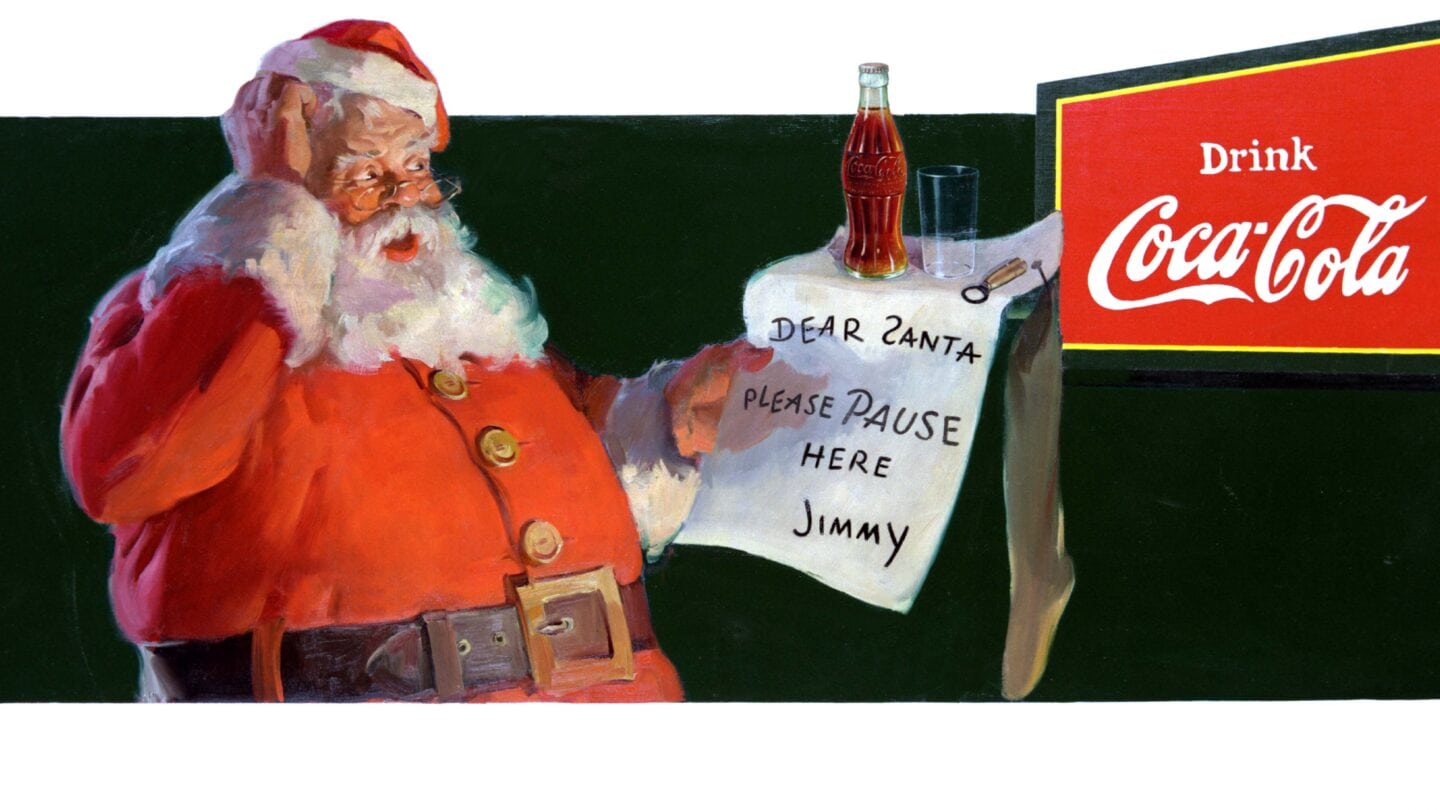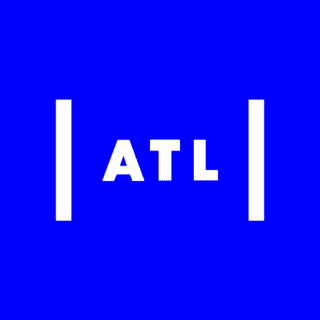
Artists incorporated Coke’s “The Pause That Refreshes” tagline in their holiday campaigns. Image courtesy of The Coca-Cola Company.
Most people can agree on what Santa Claus looks like—jolly and pleasantly plump with a red suit and white beard. But he didn’t always look that way. Many people are surprised to learn that, prior to 1931, artists depicted Santa as everything from a tall, gaunt man to a spooky-looking elf. When Civil War cartoonist Thomas Nast drew Santa Claus for Harper’s Weekly in 1862, Santa was a small elflike figure who supported the Union. He donned a bishop’s robe and a Norse huntsman’s animal skin.
Over the years, the look of Santa Claus has become a combination of several stories from a variety of countries. For example, the reindeer and sleigh are from Scandinavia, while the pipe and chimney are from Holland.
By the 1920s, almost 40 years after the refreshing drink was invented, The Coca-Cola Company began its first Christmas advertising campaign. Finding it challenging to market an ice-cold beverage in below freezing temperatures, Coca-Cola tried a new spin in its winter advertising with shopping-related ads featuring old Saint Nick in magazines like The Saturday Evening Post. These first holiday campaigns used a strict-looking Santa Claus, in the vein of Thomas Nast.
In 1930, artist Fred Mizen painted a department-store Santa in a crowd drinking a bottle of Coke. The ad featured the world’s largest soda fountain, which was located in the department store Famous Barr Co. in St. Louis, Missouri. The Coca-Cola Company used Mizen’s painting in print ads that Christmas season, appearing in The Saturday Evening Post in December 1930.
In 1931 the company began placing Coca-Cola ads in popular magazines. Archie Lee, the D’Arcy Advertising Agency executive working with The Coca-Cola Company, wanted the campaign to show a wholesome Santa who was both realistic and symbolic. Because of this, Coca-Cola commissioned Michigan-born illustrator Haddon Sundblom to develop advertising images using Santa Claus—showing Santa himself, not a man dressed as Santa.
For inspiration, Sundblom turned to Clement Clark Moore’s 1822 poem “A Visit From St. Nicholas” (commonly called “‘Twas the Night Before Christmas”). Moore’s description of St. Nick led to an image of a warm, friendly, and pleasantly plump Santa. And even though it’s often said that Santa wears a red coat because red is the color of Coca-Cola, Santa appeared in a red coat well before Sundblom painted him. Sundblom’s Santa debuted in 1931 in Coke ads in The Saturday Evening Post and appeared regularly in that magazine, as well as in Ladies Home Journal, National Geographic, The New Yorker, and others.
Coke’s Santa followed the latest trends in toys, here appearing in 1962 with a helicopter. Image courtesy of The Coca-Cola Company.
From 1931 to 1964, Coca-Cola advertising showed Santa delivering toys (and playing with them!), pausing to read a letter and enjoy a Coke, visiting with children who stayed up to greet him, and raiding the refrigerators at a number of homes. Illustrators adapted Sundblom’s original oil paintings for Coca-Cola advertising in magazines and on store displays, billboards, posters, calendars, and plush dolls. Many of those items are popular collectibles today.
Sundblom created his final version of Santa Claus in 1964, but for several decades to follow, Coca-Cola advertising featured images of Santa based on Sundblom’s original works. These paintings are some of the most prized pieces in the Coca-Cola Company’s archives department’s art collection and have been on exhibit around the world. They’ve appeared in famous locales including the Louvre in Paris, the Royal Ontario Museum in Toronto, the Museum of Science and Industry in Chicago, the Isetan Department Store in Tokyo, and the NK Department Store in Stockholm. Many of the original paintings can be seen on display at World of Coca-Cola right here in Atlanta.
Coca-Cola’s polar bears gather to watch the Northern Lights. Image courtesy of The Coca-Cola Company.
But Coca-Cola’s holiday advertising throughout the last 90 years has grown beyond Sundblom’s original Santas. In 1993, the Company debuted the beloved polar bears with the “Northern Lights” television commercial. Not only was the commercial tremendously innovative with its animation, production, and sound effects, but it also deeply resonated with consumers. The bears were playful and mischievous, reminding everyone of lovable human traits animals can have.
In fact, the inspiration for the commercial was creator Ken Stewart’s Labrador, who resembled a polar bear cub as puppy. Stewart then wondered what the polar bear equivalent of “going to the movies” would be, and the idea for “Northern Lights” was born. In the commercial, the polar bears watch the aurora borealis (the “movie”) and drink from bottles of Coca-Cola.
Now every year, the polar bears return for the holidays, get into a little mischief, and remind us of the magic of the season.
What began as an advertisement in 1995 came to life with the Coca-Cola Caravan. Image courtesy of The Coca-Cola Company.
A couple of years after the “Northern Lights” debut, another magical holiday special arrived—the Christmas Caravan. In 1995 a special holiday ad premiered with the help of Industrial Light and Magic, which worked on Star Wars, Raiders of the Lost Ark and Forrest Gump. The ad featured a Coca-Cola delivery truck covered in holiday lights and images of Santa Claus traveling all over the world, lighting up towns and their families as the caravan passes through.
The illuminated vehicles immediately became symbols of holiday happiness and actually came to fruition only a few short years later. By the late 1990s, actual trucks decked out in lights and Santa Claus images appeared in 65 U.S. cities and a swath of Eastern Europe cities. The number of trucks committed to sharing the holiday spirit has grown and the annual tradition of the Caravan lives on so families can catch a glimpse of the tour all over the world.
With all the magical moments of the holidays, Coca-Cola continues to be a part of those experiences in one way or another.


